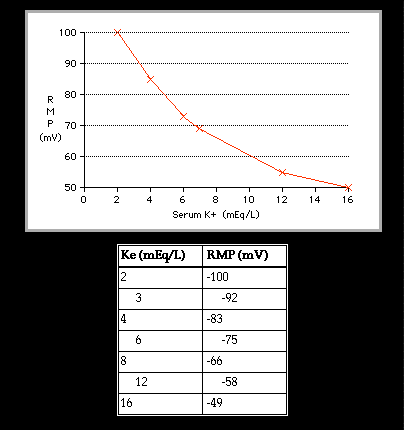
The voltage difference between the inside and outside of the cell during diastole - the resting membrane potential (RMP)- is close to and determined by the potassium equilibrium potential (Ek). This is the transmembrane potential required to maintain the concentrations of potassium on either side of the cell membrane. As discussed above (page 5.1.2) it is determined by the Nernst equation which, for potassium, is: Ek (-83mV)= -61 log Ki/Ke (Ki = 120 mM and Ke = 4.0 mM). A doubling of extracellular K, for example from 4.0 to 8.0 mM, will change Ki/ Ke from 30 to 15 and will shift the RMP from -83 to -66 mV. As shown in this table and graph, any doubling of extracellular K, i.e. from 3.0 to 6.0, or from 6.0 to 12.0 mM etc will result in a +17mV shift in the RMP.
